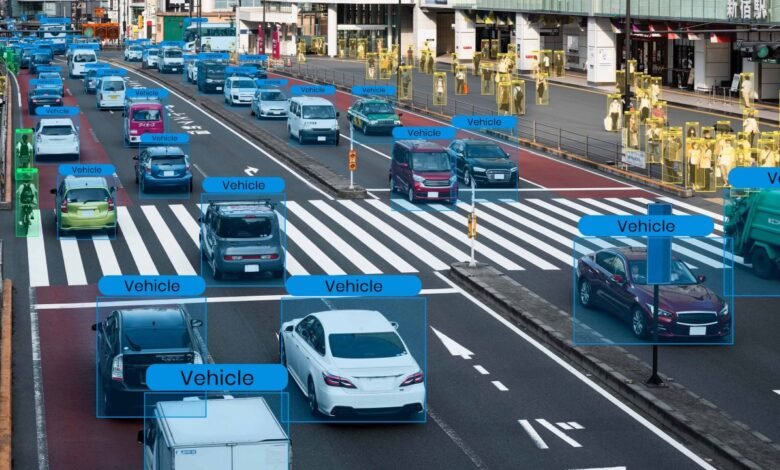Data Annotation: The Key to Unlocking AI and Machine Learning Success

data annotation plays a crucial role in the world of artificial intelligence (AI) and machine learning. It is the process of labeling or tagging data, such as images, text, or videos, to help machines learn and make accurate predictions. Without data annotation, machines would struggle to understand and interpret the vast amounts of raw data they encounter.
As technology advances, the importance of data annotation continues to grow. Companies and organizations around the world rely on data annotation to improve their AI systems and make them smarter. In this blog post, we will explore what data annotation is, why it’s essential, and how it helps in making machine learning more accurate and efficient.
What is Data Annotation and Why is It Important?
Data annotation is the process of labeling data so that machines can understand it. In simple terms, it’s like teaching a robot what certain things in pictures or text mean. For example, when you tag an image of a dog as “dog,” you are helping the computer learn what a dog looks like.
Without data annotation, machines wouldn’t be able to recognize anything correctly. This is why data annotation is a big part of making AI and machine learning systems work. It gives machines the knowledge they need to do tasks like image recognition, speech-to-text, or even self-driving cars. In short, data annotation is what makes machines smarter.

How Data Annotation Helps Improve AI Models
Data annotation helps make AI models more accurate. When a machine learns from annotated data, it can better predict things in the future. For example, a data-annotated image can teach an AI model how to identify objects in other pictures, improving its performance.
The accuracy of AI systems depends heavily on the quality of the data it learns from. If the data is poorly annotated, the machine will learn wrong patterns and make mistakes. That’s why high-quality, well-labeled data is crucial for developing strong and reliable AI models.
Types of Data Annotation Techniques Used in Machine Learning
There are several different types of data annotation methods used depending on the kind of data. The most common ones include:
- Image Annotation: Labeling objects within an image, such as identifying faces or cars.
- Text Annotation: Labeling words or sentences in text to identify things like sentiment or intent.
- Video Annotation: Marking important objects or actions within a video for training AI.
- Audio Annotation: Labeling sounds or speech in audio files to help machines recognize speech patterns.
These techniques are essential in training AI models, ensuring they learn from different types of data correctly.
The Process of Data Annotation: A Simple Guide for Beginners
Data annotation might sound complex, but it’s a step-by-step process. Here’s a basic guide:
- Collect Data: First, you need to gather the data, whether it’s images, videos, or text.
- Label the Data: Next, experts or machines go through the data and label it with tags or annotations. This is done manually or with semi-automatic tools.
- Review and Clean: After labeling, it’s important to check the quality of the annotations. Poorly labeled data can lead to mistakes.
- Feed into AI Model: Finally, the data is used to train the AI system, helping it improve over time.
By following these steps, you ensure that data is annotated properly for better AI performance.
Why Every AI Project Needs Quality Data Annotation
Every AI project needs data annotation because it helps the machine learn from real examples. For instance, if you want an AI to recognize faces, you need to provide it with many labeled pictures of faces. These examples will allow the AI to understand what a face looks like and how to spot it in other images.
Without quality data annotation, the AI could make incorrect predictions or miss important details. Think of data annotation as the foundation of any AI project. Without it, the machine can’t build the knowledge it needs to function properly. Ensuring your data is annotated well is key to creating successful AI systems.
Data Annotation Tools You Should Know About
There are many tools available for data annotation, and each tool can be used for specific types of data. Some of the top tools include:
- Labelbox: A powerful tool for image and video annotation.
- VGG Image Annotator: A free tool to label images for machine learning.
- Amazon SageMaker: A cloud-based tool for text and image annotation.
These tools make the annotation process easier and faster, allowing you to annotate large amounts of data in less time.

Challenges in Data Annotation and How to Overcome Them
Data annotation might seem simple, but it comes with its own challenges. One major challenge is ensuring accuracy. If labels are incorrect, the AI model will not perform well. To overcome this, it’s important to review annotations regularly and have multiple people check the data.
Another challenge is the time-consuming nature of data annotation. Annotating a large dataset can take a lot of time. To make it faster, some companies use semi-automated tools or outsource the work to specialists. It’s also important to train your team to avoid errors in the annotation process.
The Future of Data Annotation in AI and Machine Learning
As AI continues to evolve, data annotation will become even more important. In the future, we may see new technologies that help automate the annotation process. For instance, machine learning models may become smart enough to annotate some data on their own, reducing the time needed for manual work.
However, human annotation will still be crucial in areas that require complex understanding, such as natural language processing or medical imaging. The future of data annotation is promising, with new tools and techniques making the process more efficient than ever before.
How Data Annotation Boosts Machine Learning Performance
Data annotation is crucial in boosting the performance of machine learning models. It’s like providing a tutor to help AI systems learn. When machines are given properly labeled data, they can understand the patterns and make decisions based on those patterns. The more accurate the data, the better the AI performs in real-world tasks.
For example, imagine training an AI to recognize cats in photos. You need to feed the system a wide variety of images with accurate labels, such as “cat” for each cat image. This helps the machine understand what makes a cat different from a dog or a tree. Over time, the AI gets better at recognizing cats on its own, even in pictures it hasn’t seen before.
On the other hand, if the data is poorly labeled or incomplete, the machine may struggle to understand what it’s seeing. This could lead to errors, such as mistaking a cat for a dog. So, quality data annotation directly impacts how well machine learning models work and their ability to make accurate predictions. Without proper annotations, even the most advanced AI models will fail to perform as expected.
The Role of Data Annotation in Self-Driving Cars
One of the most exciting areas where data annotation plays a huge role is in the development of self-driving cars. These vehicles rely on machine learning to navigate through traffic, avoid obstacles, and make decisions in real-time. To train these machines, data annotation is essential.
Self-driving cars use cameras and sensors to collect data about their surroundings. This data is then annotated with labels that tell the car’s AI system what it is seeing. For example, annotations might identify pedestrians, other vehicles, traffic signs, or road markings. The AI learns to recognize these objects and understand how to respond appropriately.
For self-driving cars to function safely and efficiently, they need highly accurate and detailed annotations. If the data is misinterpreted, it could result in dangerous situations on the road. Therefore, accurate data annotation is not just useful, it’s critical for ensuring the safety and reliability of autonomous vehicles.

The Cost of Poor Data Annotation in AI Projects
While data annotation is essential for creating powerful AI models, it’s important to remember that poor data annotation can be costly. Mistakes in labeling data or inconsistencies can lead to incorrect predictions, causing AI systems to fail in real-world situations. This can result in significant setbacks for businesses and wasted resources.
For example, in the healthcare sector, AI models that diagnose diseases based on medical images rely on high-quality annotations. If the data is poorly annotated, it could lead to false diagnoses, endangering patients’ health and undermining the trust in the AI system. The cost of such errors can be enormous, not just financially, but in terms of reputation and safety.
To avoid these costs, it’s crucial to ensure data annotation is done carefully and by experts. Investing in high-quality data annotation upfront can save businesses time and money in the long run, as it helps prevent costly mistakes and ensures that the AI system functions as intended.
Conclusion
data annotation is a very important part of making AI systems work properly. It helps machines learn by labeling data like images, videos, or text so that they can understand it better. Without good data annotation, AI systems would struggle to recognize things and make smart decisions. Whether it’s for self-driving cars or medical AI, accurate data is the key to success.
As AI technology keeps growing, data annotation will only become more important. With the right tools and techniques, we can make sure that machines learn from the best data possible. If you’re working on any AI projects, remember that quality data annotation can make a big difference in the performance of your AI models. Keep the data clean and well-labeled, and your AI will improve faster!



